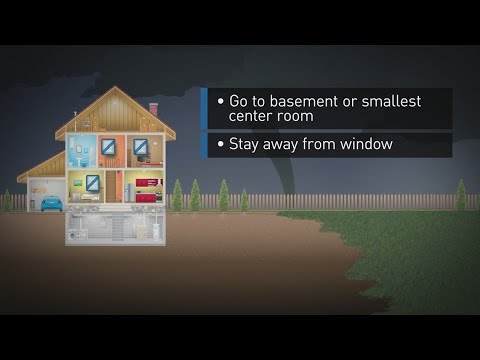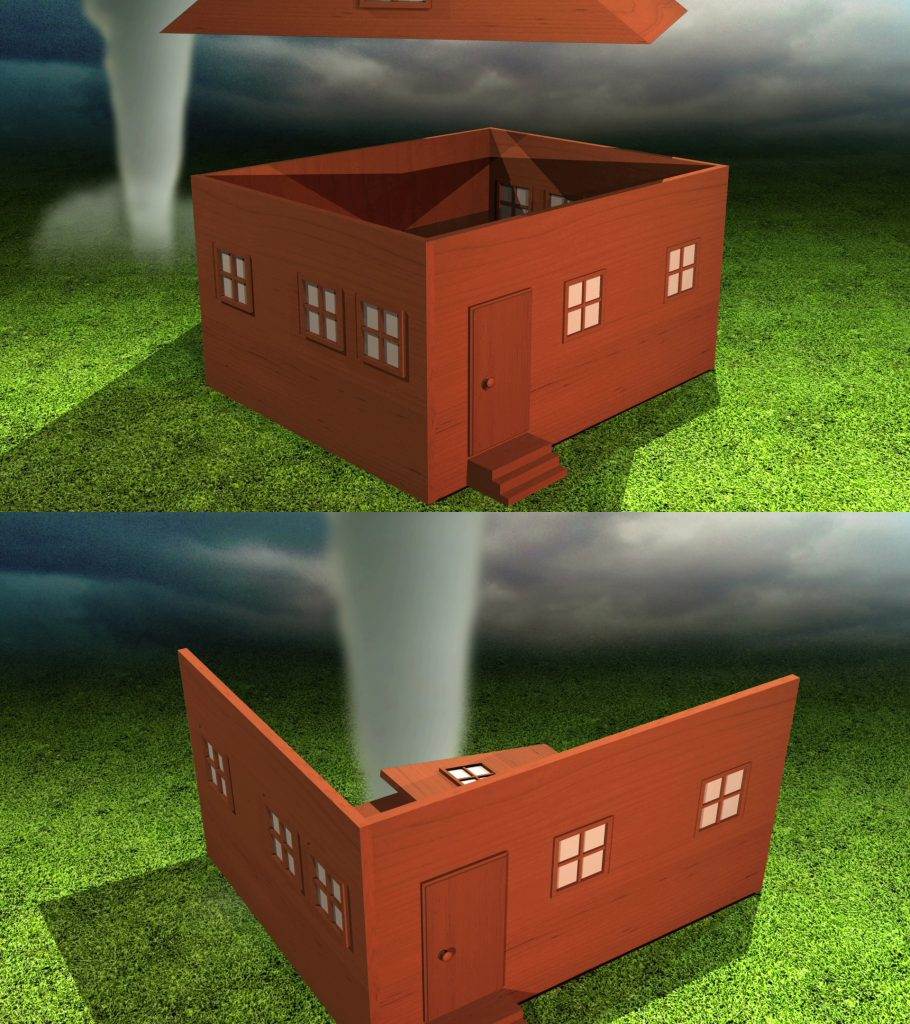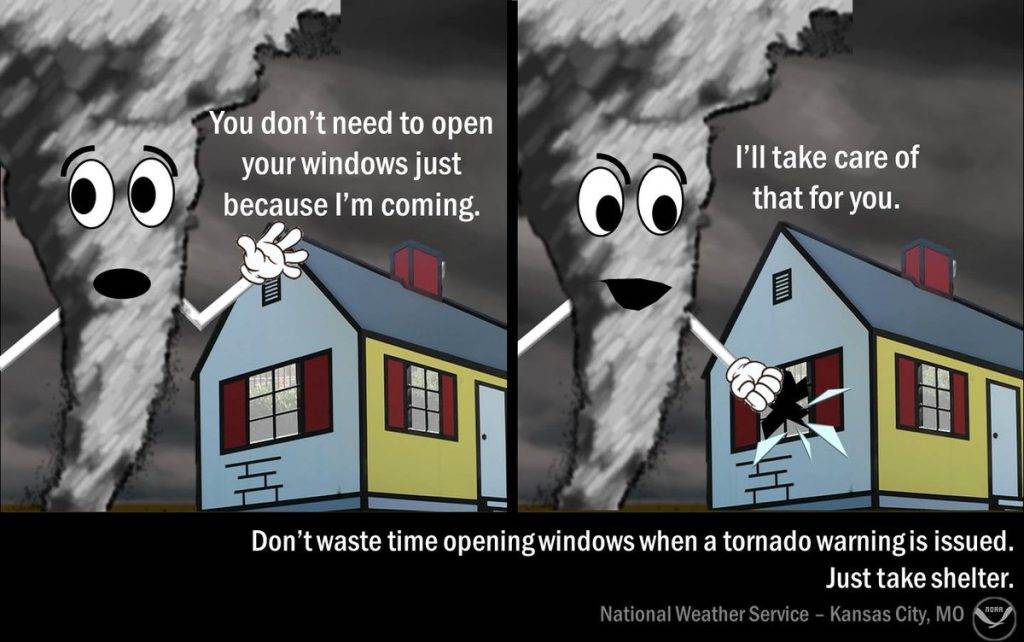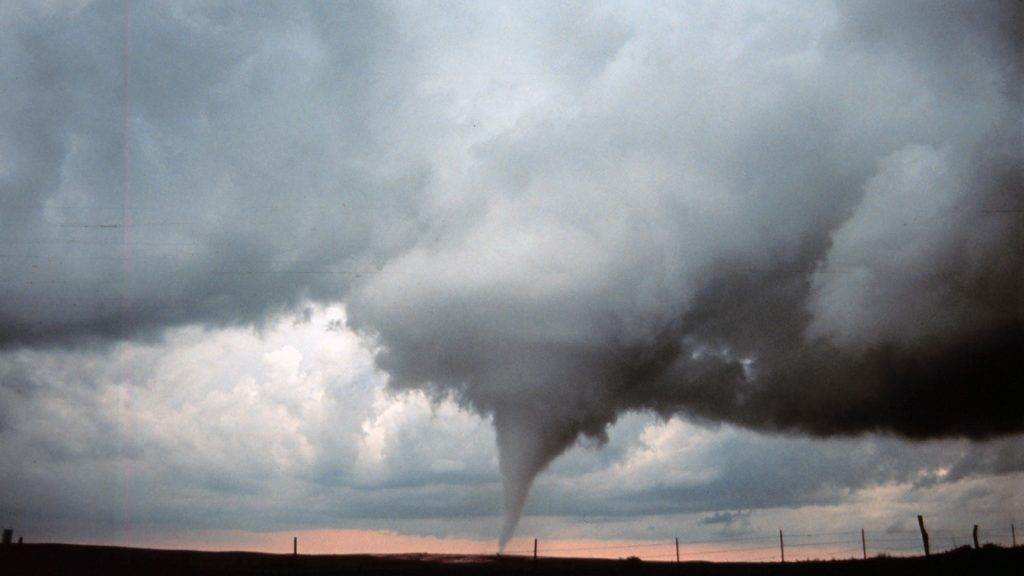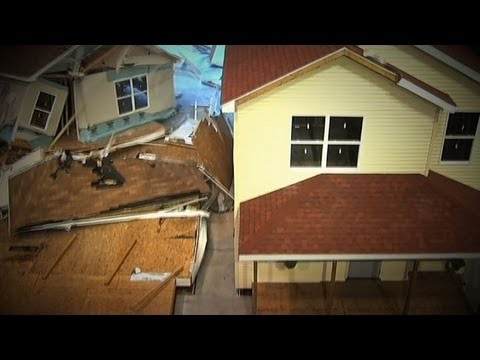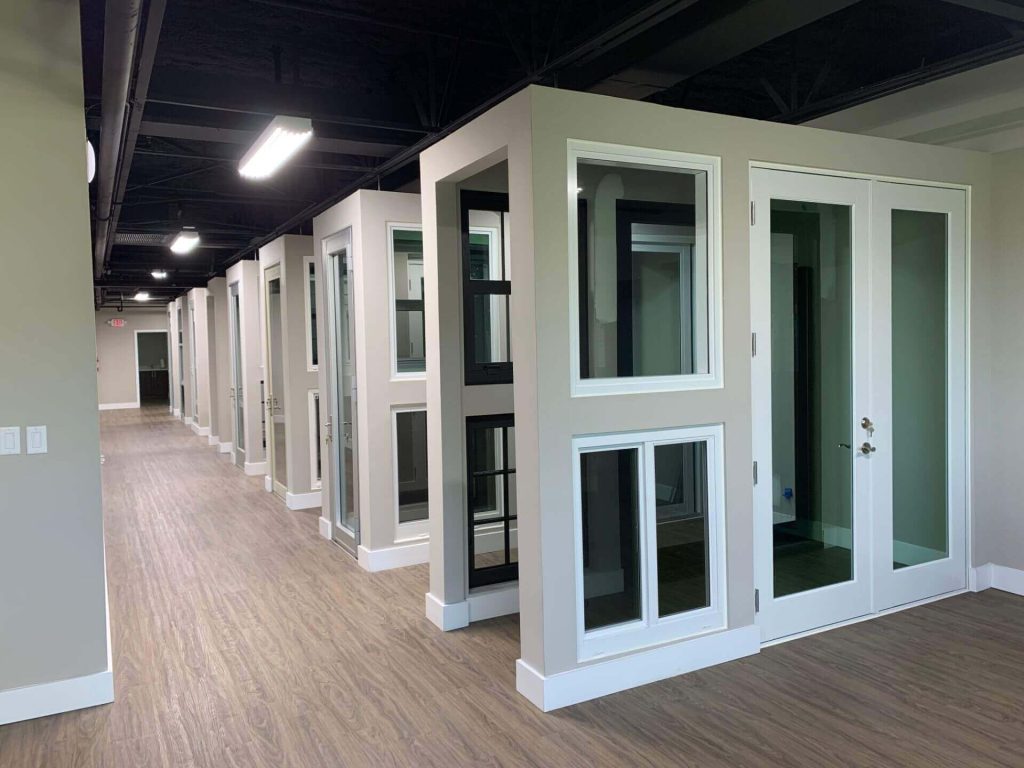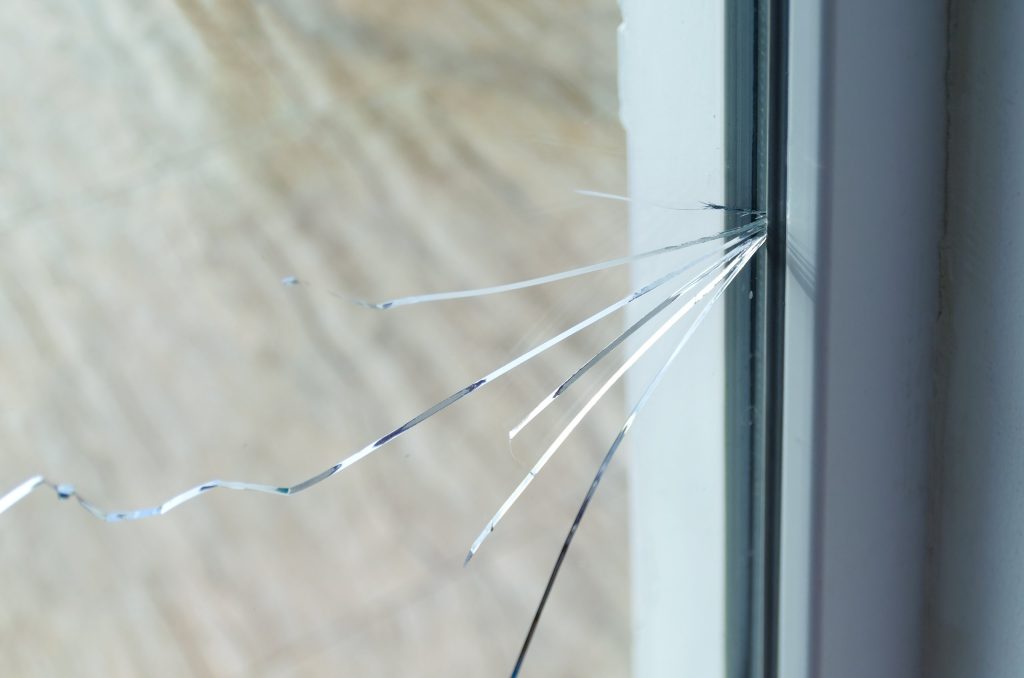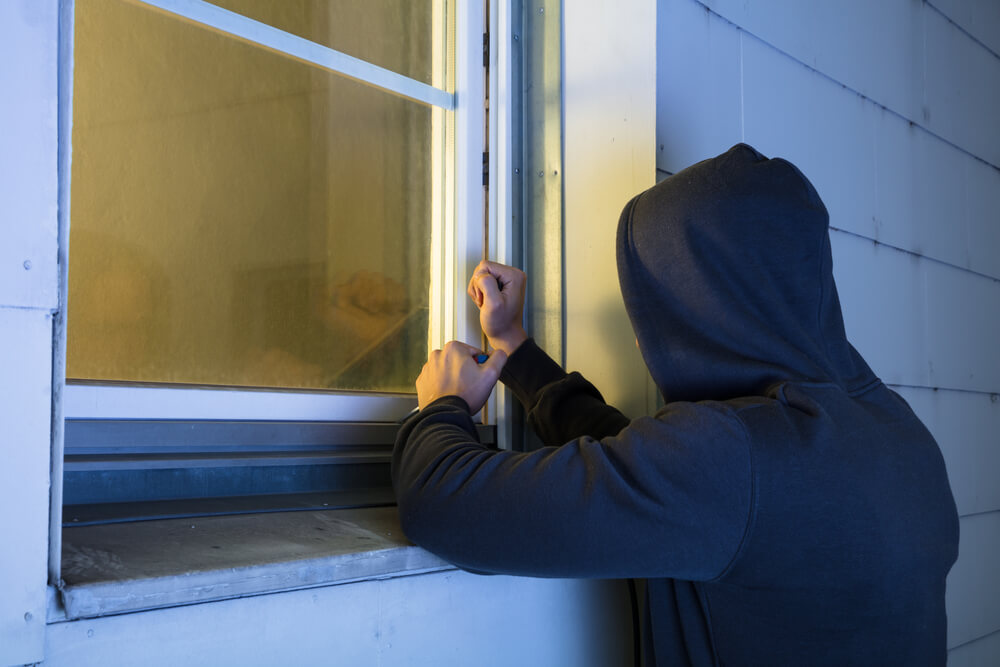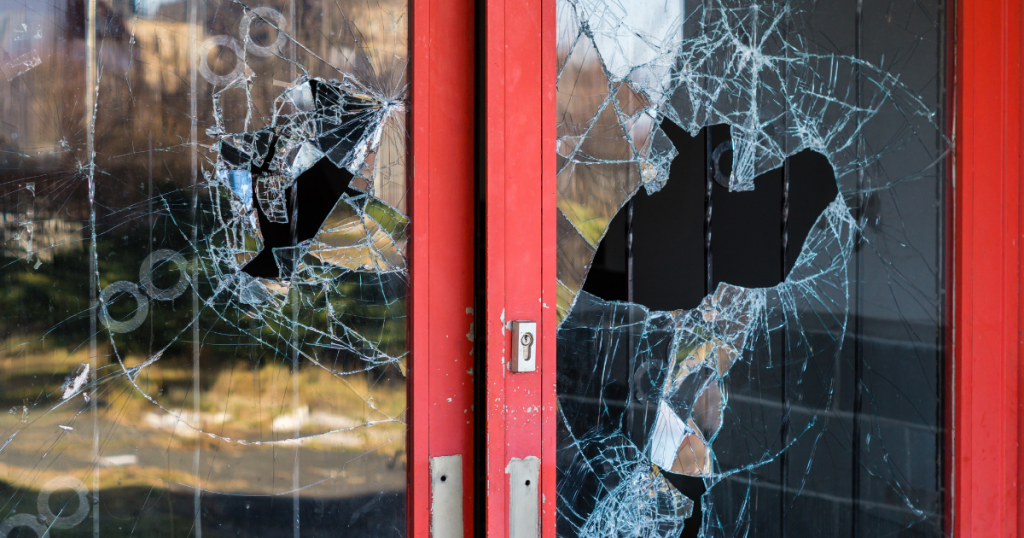So, picture this: a tornado is rapidly approaching, and people are scrambling to find shelter. In the midst of this chaos, you may have heard someone shout, “Quick, open the windows!” But wait a minute, why on earth would anyone want to open windows during a tornado? It seems counterintuitive, right? Well, as it turns out, there are actually some logical reasons behind this seemingly peculiar act. Let’s explore the science and reasoning behind why opening windows during a tornado might just save your life.

This image is property of i.ytimg.com.
Understanding Tornadoes
Tornadoes are one of the most destructive and powerful natural disasters that can occur on our planet. These violent storms are characterized by a rotating column of air that extends from a cumulonimbus cloud to the ground. With wind speeds that can reach over 300 miles per hour, tornadoes have the potential to cause significant damage and loss of life. Understanding the formation and characteristics of tornadoes is crucial for staying safe during these catastrophic events.
Definition of a tornado
A tornado is defined as a violently rotating column of air that is in contact with both the surface of the earth and a cumulonimbus cloud. This rotating column often takes the shape of a visible condensation funnel, which is made up of water droplets, dust, and debris. Tornadoes can vary in size, with some being only a few meters wide, while others can span over a mile in diameter. The destructive power of a tornado is primarily driven by the immense wind speeds that it generates.
Formation of tornadoes
Tornadoes form when there is a unique combination of atmospheric conditions. Typically, tornadoes develop during severe thunderstorms, which are characterized by an unstable atmosphere with warm, moist air near the surface and cooler air aloft. As these thunderstorms intensify, strong updrafts of air begin to rotate horizontally. This horizontal rotation is then tilted vertically by the updraft, creating a mesocyclone. The mesocyclone’s rotation continues to intensify, eventually leading to the development of a tornado.
Characteristics of tornadoes
Tornadoes can be easily recognized by their distinct characteristics. One of the most noticeable features of a tornado is its funnel-shaped cloud. This cloud is formed when the rotating column of air causes condensation in the form of a cloud. Tornadoes also have a pronounced rotating motion, typically moving in a northeastward direction in the Northern Hemisphere. Additionally, tornadoes often produce a loud roaring sound, similar to that of a freight train, due to the high wind speeds. Understanding these characteristics can help people identify and respond appropriately in the event of a tornado.
Safety Measures During a Tornado
Importance of preparedness
Being prepared for a tornado is of utmost importance. Every individual and household should have an emergency plan in place to ensure the safety and well-being of everyone involved. Preparedness includes having a designated shelter area, being aware of emergency protocols, and creating an emergency kit. By taking the time to prepare ahead of time, we can reduce the risk of injury and increase our chances of survival during a tornado.
Seeking shelter
When a tornado warning is issued, it is crucial to seek shelter immediately. The safest place to take cover is in a designated tornado shelter or a small, windowless interior room on the lowest level of the building. It is important to stay away from windows, as they can shatter and become projectiles during the high winds of a tornado. If a basement or storm shelter is not available, finding a small, windowless interior room on the ground floor is the next best option for seeking shelter.
Key dos and don’ts during a tornado
During a tornado, there are several key dos and don’ts that can help keep us safe. It is important to move quickly to the designated shelter area and take cover immediately. Once in the shelter, it is essential to stay low to the ground and protect our heads and necks with our arms. Listening to a weather radio or keeping updated with local news can provide vital information during a tornado. On the other hand, it is crucial that we do not waste time opening windows, as this misinformation can put us at risk of injury from flying debris and increased wind exposure.

This image is property of cdn.hswstatic.com.
Myth Vs. Reality: Opening Windows During a Tornado
Exploring the myth
One of the most common misconceptions about tornado safety is the idea that opening windows can prevent or lessen damage during a tornado. This myth has been perpetuated for decades, leading many people to believe that it is necessary to open windows to equalize the pressure inside and outside of the building. However, this belief is not grounded in scientific reality.
Common reasons behind the myth
The myth of opening windows during a tornado can be traced back to a misunderstanding of air pressure dynamics. Some people believe that the low pressure inside a tornado can cause buildings to explode due to the pressure difference. Opening windows is thought to reduce this pressure differential, allegedly preventing the building from collapsing. Unfortunately, this theory overlooks the fact that the primary cause of destruction during a tornado is the high wind speeds, not the pressure difference.
Debunking the myth
In reality, opening windows during a tornado is not only unnecessary but also dangerous. Tornadoes bring incredibly high winds that can hurl debris at tremendous speeds. Opening windows provides an additional entry point for this debris, increasing the risk of injury for those inside. Moreover, the high wind speeds can create a positive pressure inside the building, which can lead to structural damage. Therefore, it is essential to avoid the urge to open windows during a tornado and instead focus on seeking shelter in a designated area.
Understanding Pressure Differences
Understanding air pressure
To grasp the impact of pressure differences during a tornado, it is important to understand the concept of air pressure. Air pressure is the force exerted by the weight of the atmosphere above a given point. It affects our daily lives and is an integral part of weather patterns. Differences in air pressure can lead to the movement of air masses and the formation of storms, including tornadoes.
Pressure differentials in tornadoes
During a tornado, pressure differentials play a significant role in the storm’s formation and behavior. Inside a tornado, there is a low-pressure center known as the mesocyclone. This low-pressure center, coupled with the high wind speeds, creates the destructive force that characterizes tornadoes. The pressure difference between the mesocyclone and the surrounding air contributes to the powerful rotating winds and the funnel cloud formation.
Impact of pressure on buildings
While pressure differentials are present during a tornado, their impact on buildings is often misunderstood. Contrary to popular belief, the primary cause of destruction during a tornado is not the pressure difference but the extreme wind speeds. The high winds exert tremendous force on structures, causing them to collapse or sustain severe damage. The structural integrity of a building is much more critical in withstanding tornadoes than equalizing the pressure inside and outside of the building. Therefore, focusing on seeking shelter in sturdy, windowless areas should be the priority for personal safety during a tornado.

This image is property of www.ksn.com.
Risks of Opening Windows
Flying debris
Opening windows during a tornado can significantly increase the risk of injury from flying debris. Tornadoes generate incredibly strong winds that can pick up and propel objects at high velocities. keeping windows closed serves as a barrier, preventing debris from entering the building and reducing the potential for injury.
Increased wind exposure
By opening windows during a tornado, we expose ourselves to the full force of the high winds. This exposes us to the risk of being hit by flying debris, as well as being directly impacted by the destructive winds. Being in a sheltered area without windows provides a much safer environment during a tornado, minimizing the risk of being injured by the powerful winds.
Potential for structural damage
In addition to the danger posed by flying debris and increased wind exposure, opening windows during a tornado can actually contribute to structural damage. The high wind speeds during a tornado can create positive pressure on the side of the building facing the storm. This positive pressure can push against the building’s structure, potentially causing it to weaken or even collapse. Keeping windows closed helps maintain the structural integrity of the building, reducing the risk of structural damage during a tornado.
Risk of injury
Ultimately, opening windows during a tornado puts individuals at a higher risk of injury. The combination of flying debris, increased wind exposure, and potential structural damage creates a dangerous situation. By following proper tornado safety guidelines and seeking shelter in designated areas without windows, we can minimize the risk of injury and increase our chances of survival.
Compartmentalization and Safe Rooms
Importance of sealed spaces
When it comes to tornado safety, compartmentalization and the use of safe rooms are crucial strategies. Creating sealed spaces within our homes or buildings can provide a level of protection against the damaging effects of tornadoes. These sealed spaces prevent the intrusion of debris and help maintain the structural integrity of the building, increasing the chances of survival.
Safe room design
Safe rooms are specifically designed spaces that provide enhanced protection during tornadoes. They are typically constructed to withstand the intense wind forces and flying debris associated with tornadoes. Common features of a safe room include reinforced walls, a sturdy door, and impact-resistant windows or no windows at all. By having a safe room in our homes or workplaces, we can have a designated area that offers maximum protection during a tornado.
Briefcase analogy
An analogy that helps illustrate the concept of compartmentalization and safe rooms is comparing them to a briefcase. When a tornado strikes, the sealed compartments of the briefcase protect its contents from being damaged or scattered. Similarly, sealed spaces within a building act as compartments that safeguard human lives and minimize property damage during tornadoes. By utilizing safe rooms and sealed areas, we can increase our chances of survival by providing a fortified space within which to seek shelter.

This image is property of pbs.twimg.com.
Misinformation and Common Beliefs
Propagation of misinformation
One of the major challenges in tornado safety is the propagation of misinformation. Opinions and beliefs that lack a solid foundation in scientific understanding can lead to ineffective or even dangerous actions during tornadoes. It is crucial to rely on accurate information from trusted sources and be aware of the common misconceptions that can hinder our ability to stay safe during these hazardous events.
Misconceptions about tornado safety
Opening windows during a tornado is just one example of the many misconceptions surrounding tornado safety. Other common misconceptions include the belief that overpasses provide safe shelter, that tornadoes are only a threat in certain regions, or that seeking shelter under a highway overpass is a viable option. These misconceptions stem from a lack of knowledge or understanding of tornado behavior and can put individuals at risk.
Importance of accurate information
To ensure our safety during a tornado, it is crucial to rely on accurate information and guidelines provided by meteorologists, emergency management agencies, and reputable sources. By debunking myths and staying informed through accurate information, we can make informed decisions, implement proper safety measures, and protect ourselves and our loved ones during tornado events.
Emergency Preparedness
Developing a tornado emergency plan
Developing a tornado emergency plan is a crucial step in preparedness. This plan outlines the steps to take in the event of a tornado warning and specifies the designated shelter areas within our homes or workplaces. It is important to communicate the emergency plan with all family members or colleagues and practice drills to ensure everyone knows what to do and where to go for safety.
Creating an emergency kit
Preparing an emergency kit is another important aspect of tornado preparedness. This kit should include essential items such as non-perishable food, water, medications, a flashlight, batteries, a first aid kit, and any necessary personal documents. Having an emergency kit readily available can ensure that we have the necessary supplies to sustain ourselves during and after a tornado event.
Understanding emergency alerts
Being familiar with the different types of emergency alerts and warnings issued by meteorological authorities is crucial for tornado preparedness. Understanding the terminology used in alerts, such as tornado watch (conditions favorable for tornado formation) and tornado warning (tornado has been spotted or detected), can help us take appropriate action when necessary. Staying informed through weather radios, emergency alert systems, or smartphone applications is vital for receiving timely and accurate information during tornado events.
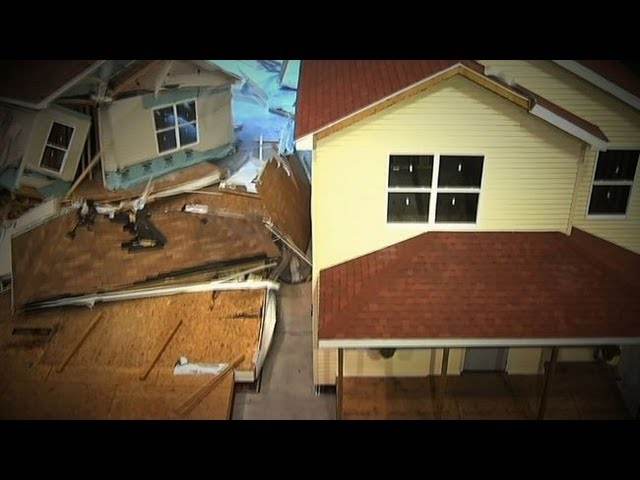
This image is property of i.ytimg.com.
Seeking Shelter in the Home
Ideal shelter locations
When seeking shelter in our homes during a tornado, it is important to identify the ideal locations for safety. Interior rooms on the lowest level of the building are generally the safest areas. These rooms should not have windows, as windows can shatter and expose us to flying debris. Bathrooms, closets, or hallways without windows are often suitable options for sheltering during a tornado.
Interior rooms without windows
The interior rooms without windows provide an added layer of protection during tornadoes. The absence of windows reduces the risk of injury from broken glass and flying debris. Additionally, interior rooms are less likely to be exposed to the full force of the high winds, further decreasing the risk of structural damage.
Reinforced structures and basements
Structures with reinforced walls, such as basements or safe rooms, are the most secure areas within a home during a tornado. Basements, being below ground level, offer significant protection from the destructive winds. Similarly, safe rooms can provide a fortified space designed to withstand extreme wind forces and flying debris. If possible, seeking shelter in a basement or safe room is the safest option for tornado protection.
Impact of Tornado Winds
Understanding tornado wind speed
The wind speed in a tornado is one of its defining characteristics. Tornadoes are known for their incredibly strong winds, which can reach speeds exceeding 300 miles per hour. The combination of the high wind speeds and the extreme pressure differences contributes to the tremendous destructive power of tornadoes.
Damage caused by high winds
The high winds generated by tornadoes are responsible for the majority of the damage inflicted on structures and the environment. These winds can easily uproot trees, lift vehicles, and demolish buildings. The powerful gusts, coupled with the swirling debris, create a dangerous and chaotic environment that can result in devastating consequences.
Tornado wind effects on buildings
Tornado winds impose immense stress on buildings, challenging their structural integrity. The wind forces can lead to the collapse or severe damage of poorly constructed or vulnerable structures. The concentrated wind speeds within a tornado can cause roofs to be torn off, walls to cave in, and windows to shatter. Understanding the impact of tornado winds on buildings highlights the importance of seeking shelter in designated areas and having safe rooms or reinforced structures that can withstand the tremendous forces exerted by tornadoes.
In conclusion, understanding tornadoes, implementing safety measures, and debunking myths are essential for protecting ourselves during these destructive storms. Tornadoes are nature’s fury unleashed, and being prepared and informed can make a significant difference in mitigating the risks associated with these powerful natural disasters. By following proper safety guidelines, creating emergency plans, and seeking shelter in designated areas, we can increase our chances of surviving a tornado event and minimizing the potential for injury and loss.

